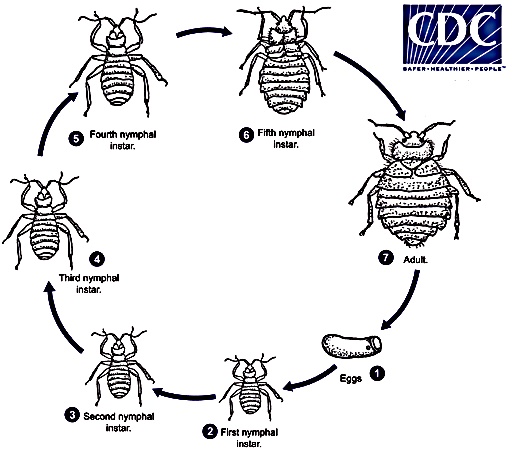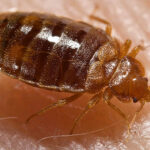Richard D. L. Fulton
“Don’t Let the Bed Bugs Bite.” How many readers have heard that often-spoken form of good night over the decades?
It can actually be kind of humorous… until it’s not.
According to the U.S. Environmental Protection Agency (EPA), the Centers for Disease Control and Prevention (CDC), and the U.S. Department of Agriculture (USDA), all consider bed bugs a public health pest, even though the creatures are not known to spread or transmit diseases.
Nevertheless, an infestation of bed bugs can adversely impact the quality of life.
What Are Bed Bugs?
Bed bugs are insects belonging to a family of insects that feed upon mammalian blood—that of bats, birds, and notoriously, humans, depending on the species.
Because bed bugs do not fly, they tend to rely on a means of transportation such as on clothing and furnishings involving cloth as part of their effort to promulgate the species.
Britney Bishop, formerly of Adams County, spending 16 years in upper hotel management in the Gettysburg area, to serving as hotel operations manager in Pasco County, Florida, provided much insight regarding the “nature of the beasts.”
Bishop said bed bugs can lay from one to five eggs each day, and may lay up to 500 eggs within a lifetime.
“If you see an adult, it means they have been there for quite a while, as it takes a bedbug 21 days to reach maturity,” Bishop said, adding, “Bed bugs can live four to six months.”
Detecting Bed Bugs
Finding and correctly indentifying an infestation early is important. The EPA suggests various ways to determine if bed bugs are present:
Rusty or reddish stains on bed sheets or mattresses caused by bed bugs being crushed.
Dark spots (about this size: •), which are bed bug excrement and may bleed on the fabric like a marker would.
Eggs and eggshells, which are tiny (about 1mm) and pale-yellow skins that nymphs shed as they grow larger.
Live bed bugs.
Also, the EPA lists a number of places where bed bugs can be found:
In the seams of chairs and couches, between cushions, and in the folds of curtains.
In drawer joints.
In electrical receptacles and appliances.
Under loose wallpaper and wall hangings.
At the junction where the wall and the ceiling meet.
In the head of a screw.
Treating Bugs in the Single-Family Home or Office
Aside from contacting a qualified exterminator, some measures can be taken at home and/or office to combat a bed bug infestation. Healthline.com suggests the following:
First and foremost, if bed bugs are detected in the home, contact a qualified exterminator. In the interim, healthline.com suggests washing bedding and clothing in hot water for 30 minutes. Then, put them in a dryer on the highest heat setting for 30 minutes.
Use a steamer on mattresses, couches, and other places where bedbugs hide.
Pack up infested items in black bags and leave them outside on a hot day that reaches 95°F (35°C) or in a closed car. In cooler temperatures, it can take 2 to 5 months to kill sealed-up bugs.
Put bags containing bedbugs in the freezer at 0°F (-17.78°C). Use a thermometer to check the temperature. Leave them in there for at least 4 days. For additional guidance, visit healthline.com.

Treating Bed Bugs in the Multifamily Residences
Multifamily residences can include apartment buildings, townhouses, hotels, and dorms.
Using hotels as an example, Bishop said a hotel she managed in Florida employed the following to deal with bed bugs:
Preventive measures were taken in the form of weekly, random inspections by a licensed exterminator (hotels would generally have a higher turnover of occupancy than an apartment complex or dorms, thus possibly requiring more frequent inspections).
Housekeeping was educated to report potential bed bug activity to management.
In addition, Bishop said, that guests will report possible bed bug activities that all other measures might have missed or that occurred between exterminator inspections.
“Employing an exterminator to perform routine inspections is the first line of defense,” Bishop stated.
For additional information, visit the U.S. Environmental Protection Agency (EPA) at epa.gov, the Centers for Disease Control and Prevention (CDC) at cdc.gov, and the U.S. Department of Agriculture (USDA) at usda.gov.


